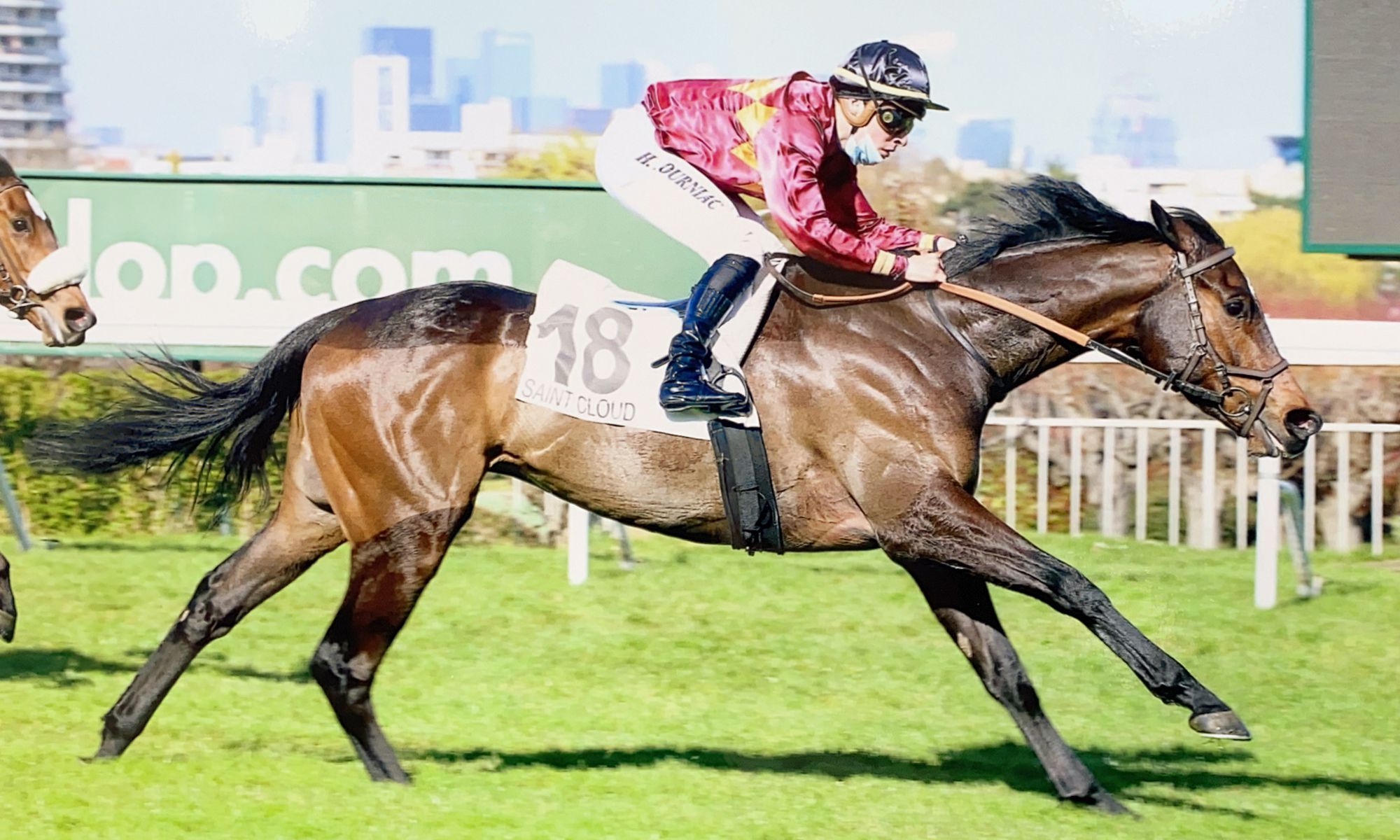Looks like the road crews imported from the autoroute managed to thaw out the track in Deauville, because there was a full card of racing today. A mixture of road salt was harrowed deeply into the track, and judging from what I could see from the television coverage, the result was deep, fluffy, rideable stuff. If they can keep it up, there will be racing through the week, which means racing for us on Saturday. I don’t know what kind of soup this will all melt into when the weather finally breaks, but for now, it looks promising.
The only problem is we’re still in the deepfreeze in Maisons-Laffitte, with the exception of our Polytrack, which is impossible to get to on horseback from my yard. So we saddled up Pixie and Hard Way this morning, loaded them into my friend Jean-Paul’s truck and hauled them over to the track. It all went very well, and both horses showed nothing but positive effects from their mini-vacation. If we can’t get over to the track the conventional way tomorrow, we’ll do the same thing again, and on until Saturday.
The deeper track should suit Hard Way very well, but I’m less certain about Pixie. The race Saturday was really a second choice for her, because she’ll carry top weight of 62 kilos and will be going a longer distance for the first time, which is far from ideal. On the other hand, if she finishes nowhere, it will at least take her handicap mark down another kilo or more, which would really help place her this spring. Her owner and I will talk it over tomorrow morning and make a final decision.


How do you approach the conditioning process? I understand each horse is different but is there a general philosophy you adhere to?
Interval training? Heart rate monitors and VO2max? Hills? All, none? Do European trainers (and I don’t know if this includes you) breeze (is it gallop across the pond?) their horses like the trainers do here or is it more distance and resistance?
Sorry. I warned you.
Ah, this response risks getting a little long….but I’ll try to be brief. The general philosophy is long and slow tapering to short and fast. But like you said, all horses are different, and if you’re bringing a yearling or two-year-old along for the first time, you need to add short bursts of speed as early as you can to strengthen bone and tendons. But generally, I like to build condition by working up to about 3,000 meters of slow galloping – you might call it hack cantering over there. (3,000 meters is just under two miles). Once I’ve got a horse doing that maybe four times a week, I’ll start galloping a mile quicker about twice a week. That mile (or sometimes mile and a quarter) just gets quicker as we taper toward a race.
Now: Most of our training is done on flat-ish sand gallops (or on the all-weather if everything else is frozen). Most of us over hear have a rider on the back of the horse for at least an hour – no hot-walking the shed rows. My horses do a LOT of walking around the roads and trails going and coming from the gallops. You will rarely see gadgets like heart rate monitors (although I had one once and thought it was great fun, I did not replace it when it broke not long after buying it). You will never see a stopwatch. We “breeze” our horses in the tapering process, sometimes galloping upsides with others to judge where you are speedwise, but there are no timed workouts. I love hills, but we don’t have many of them. When I want to do hill work I take my horses back to the national forest and climb up and down the dirt bike trails. Works miracles on stiff backs.
Lastly, interval training is for trotters.
Most of our races over here are quite a bit longer than in your neck of the woods, plus we have a huge steeplechasing program that requires a lot of condition.
Thanks Gina. At the risk of getting you fired for spending all your time answering inane questions instead of tending to your horses, do two or three kilos make a difference to a 460 kilo horse, at a mile?
I guess weight is weight but that seems an awfully small ratio. Can you notice the difference?
Well, she’ll be running 1,900 meters, which is just shy of a mile and a quarter and 400 meters further than she’s run so far. The weight matters because this is a handicap, so while she carries 62 kilos, the next horse down the line carries only 59 kilos, on down to the 52 kilos carried by the bottom weight in the 17-horse field. Plus she’s a small filly with a sort of dicey back, so the weight will make a difference. I ride her in training, and I’m 65 kilos, so she can carry the weight even though it’s not ideal. But the biggest concern here is how heavily weighted she is compared with her competitors. The saying goes that a pound on the back is worth a length in the stretch.
Don’t worry about the questions. It’s f*cking freezing outside and you’re giving me an excuse to stay indoors.